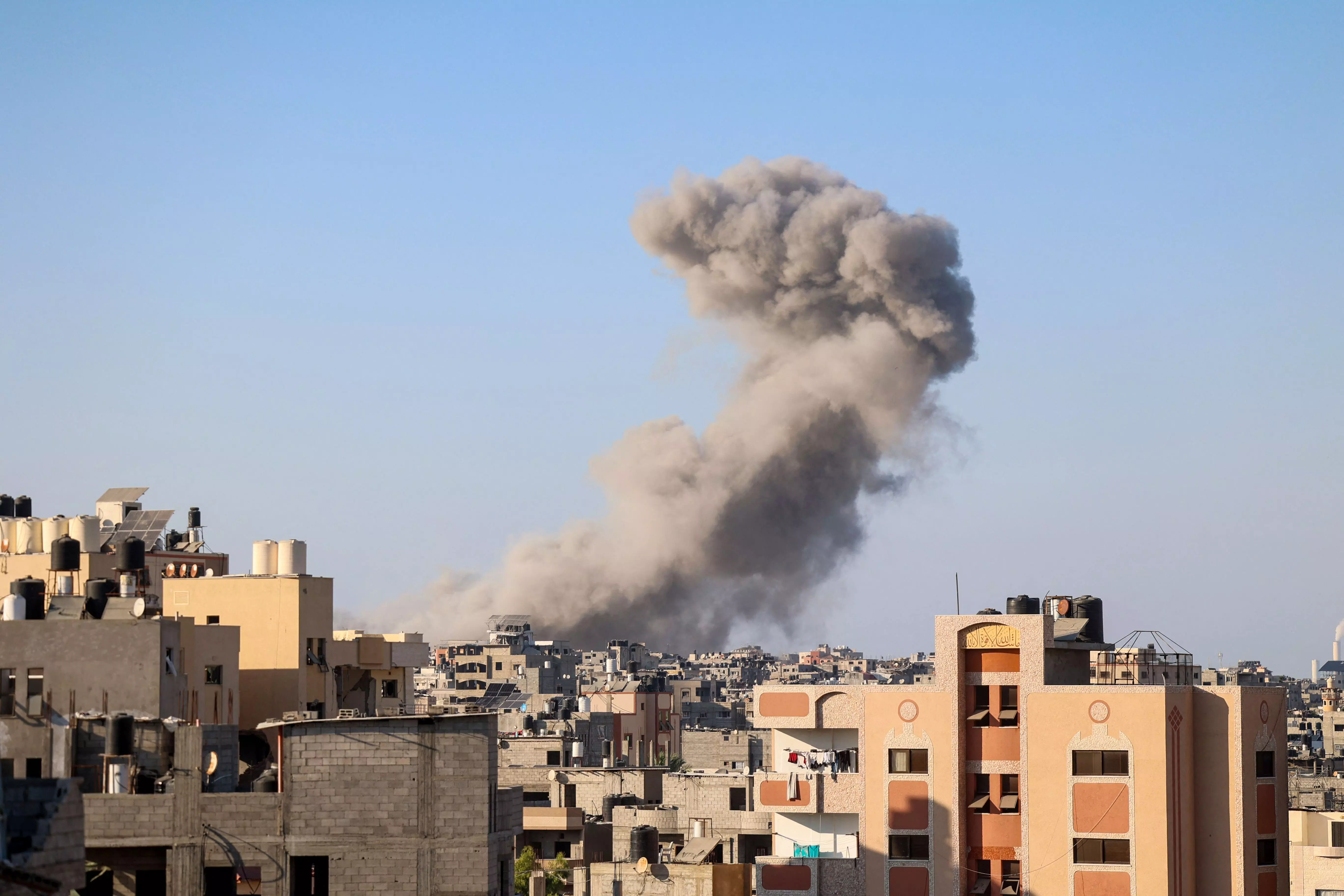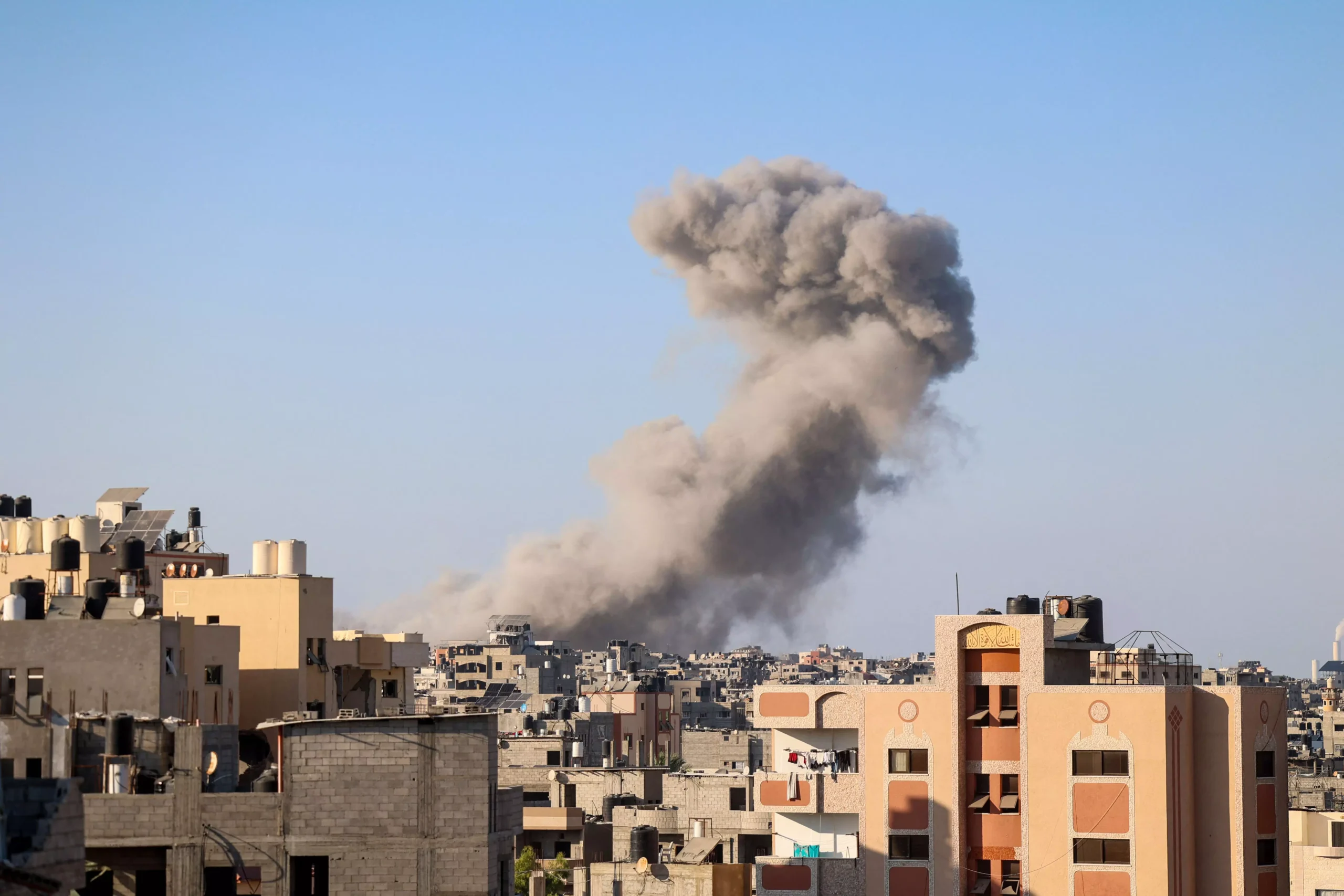
Hamas appeared to push back against resuming negotiations on Thursday on any new cease-fire proposals. In a statement, it urged mediators United States, Egypt and Qatar to submit a plan to implement what was agreed on last month, based on US President Joe Biden’s proposal, “instead of going to more rounds of negotiations or new proposals that provide cover for the occupation’s aggression.”
Israel has repeatedly ordered mass evacuations as its troops return to heavily destroyed areas where they previously battled Palestinian militants. The vast majority of Gaza’s population of 2.3 million people have been displaced, often multiple times, in the besieged territory 25 miles (40 kilometres) long by about 7 miles (11 kilometres) wide.
The latest evacuation orders apply to areas of Khan Younis, Gaza’s second-largest city, including part of an Israeli-declared humanitarian zone from which the military said rockets had been fired. Israel accuses Hamas and other militants of hiding among civilians and launching attacks from residential areas.
The humanitarian zone has steadily shrunk during the war with the various evacuation orders. Hundreds of thousands of people have crammed into squalid tent camps with few public services or sought shelter in schools, though the United Nations says hundreds of those have been directly hit or damaged.
Khan Younis suffered widespread destruction during an air and ground offensive earlier this year. Tens of thousands fled again last week after an evacuation order.
The new order came in leaflets dropped from the sky. As smoke rose on the horizon, hundreds of families carrying belongings in their arms left homes and shelters, seeking elusive refuge. One child carried a stuffed Hello Kitty doll as others walked through rubble-filled streets.
“We don’t know where to go,” said Amal Abu Yahia, a mother of three, who had returned to Khan Younis in June to shelter in their severely damaged home. It was the fourth displacement for the 42-year-old widow, whose husband was killed when an Israeli airstrike hit their neighbors’ house in March.
She said they went to Muwasi, a sprawling tent camp along the coast, but couldn’t find space.
Ramadan Issa, a father of five in his 50s, fled Khan Younis with 17 members of his extended family, joining hundreds of people walking toward central Gaza.
“Every time we settle in one place and build tents for women and children, the occupation comes and bombs the area,” he said, referring to Israel. “This situation is unbearable.”
Gaza’s Health Ministry, which doesn’t distinguish between civilians and combatants, says the Palestinian death toll from the war is approaching 40,000. Aid groups have struggled to address the staggering humanitarian crisis, while international experts have warned of famine.
The war began when Hamas-led militants burst through Israel’s defenses on October 7 and rampaged through farming communities and army bases near the border, killing around 1,200 people ‘mostly civilians’ and abducting around 250 people. Of the roughly 110 remaining hostages, Israeli authorities believe around a third are dead.
The conflict has threatened to trigger a regional war, as Israel has traded fire with Iran and its militant allies across the region. “I hope that they will think this through and won’t get to a point where they will force us to cause significant damage and increase the chances of war breaking out on additional fronts,” Israeli Defense Minister Yoav Gallant said Sunday.
US Defense Secretary Lloyd Austin spoke to Gallant on Sunday, reiterating America’s commitment to defend Israel and noting the strengthening of the US military force posture and capabilities in the region, according to the Defense Department. It noted Austin has ordered a guided missile submarine to the Middle East and is telling the USS Abraham Lincoln aircraft carrier strike group to sail more quickly to the area. The Lincoln was expected in the region by month’s end.
In Lebanon, the Health Ministry said an Israeli strike near the southern town of Taybeh killed two people, without giving details. Israel’s military said it struck a cell of the Lebanese militant group Hezbollah. Hezbollah announced the deaths of three militants, without details, and said it conducted rocket and artillery attacks on Israeli military positions.
In the occupied West Bank, which has seen increased violence since the war began, Israel’s military said that an Israeli civilian was fatally shot in an attack by ‘terrorists’ in the area of Mehola Junction. The military said the ‘terrorists’ opened fire from a passing vehicle at other cars, and another civilian was wounded. Soldiers were pursuing the attackers.
Israel’s airstrike on Saturday hit a mosque inside a school in Gaza City where thousands of people were sheltering. The Israeli military said it killed 19 Hamas and Islamic Jihad militants. Hamas and Palestinian activists disputed that, saying two of the 19 were killed in earlier strikes and others were known to be civilians or opponents of Hamas.
Northern Gaza has been surrounded by Israeli forces and largely cut off from the world, and it wasn’t possible to independently confirm accounts from either side. European leaders and neighbors of Israel condemned the strike.
